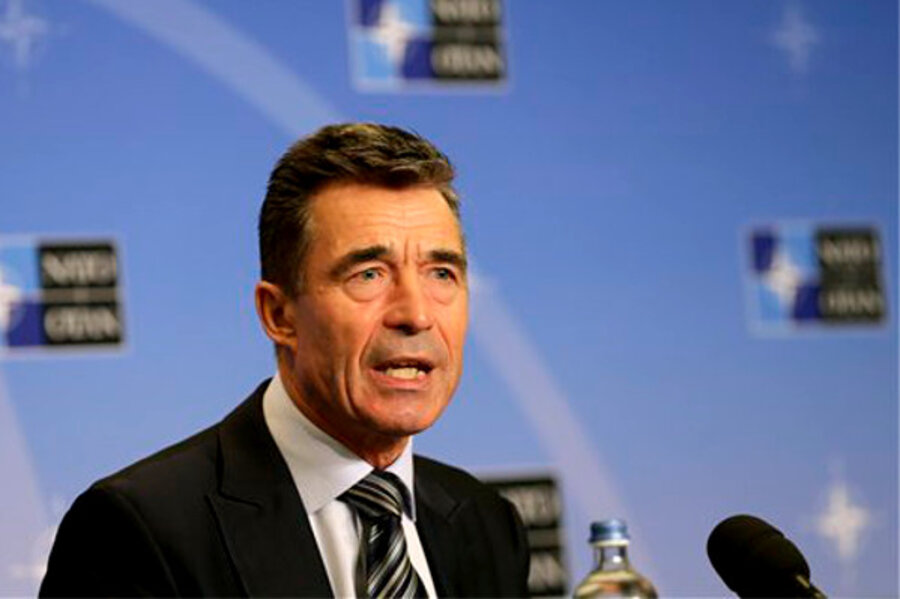NATO plans high-readiness 'spearhead' with troops, jets, and ships
Loading...
| BRUSSELS
NATO leaders this week will be asked to approve creation of a high-readiness force and the stockpiling of military equipment and supplies in Eastern Europe to help protect member nations there against potential Russian aggression, the alliance's secretary general said Monday.
"The Readiness Action Plan will ensure that we have the right forces and the right equipment in the right place, at the right time," Anders Fogh Rasmussen said. "Not because NATO wants to attack anyone. But because the dangers and the threats are more present and more visible. And we will do what it takes to defend our allies."
President Barack Obama and leaders of NATO's other member countries open a summit meeting Thursday in Wales that is expected to be dominated by how the US-led alliance should react over the long term to Russian actions toward Ukraine and the implications for security in Europe.
At a pre-summit news conference, Rasmussen said alliance officials have drafted a detailed plan that "responds to Russia's aggressive behavior" but also equips NATO to respond to all security challenges, wherever they may arise.
At its core: a proposed new force that Rasmussen said could be composed of several thousand troops contributed on a rotating basis by the 28 NATO countries.
Backed by air and naval assets, the unit would be a "spearhead" that could be deployed at very short notice to help NATO members defend themselves, Rasmussen said.
Since the annexation of the Crimean Peninsula by Russia in March, Poland and other Eastern European members of NATO have demanded the alliance take a more active and high-profile role in their defense. Other allies, though, have been wary of doing anything that might endanger a 1997 agreement with Moscow under which NATO pledged not to base substantial numbers of soldiers in Eastern Europe on a permanent basis.
The compromise the NATO leadership appear to have worked out is the pre-positioning of equipment and supplies in Eastern Europe so the new high-readiness force "can travel light, but strike hard if needed," in Rasmussen's words.
Airfields and seaports in the region could also be upgraded to permit their use by the force, Rasmussen said.
Another senior NATO official, briefing reporters on condition he not be identified by name, said the new high-readiness force would be expected to deploy to any alliance member country within 48 hours.
The "spearhead" unit is one of a dozen measures NATO officials are proposing to deal with a fast-changing and riskier global security environment to the alliance's east and south, the senior official said.
Copyright 2014 The Associated Press. All rights reserved. This material may not be published, broadcast, rewritten or redistributed.







